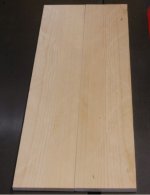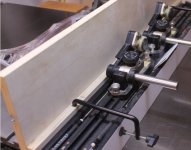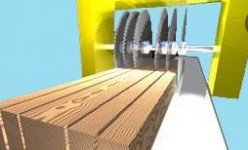Packard said:I do recall one book saying that a good way to cut multiple strips of wood was to mount two blades in a table saw with a spacer between them. So it suggested that with one pass I could turn out 2 strips 1/4" wide.
Snip.
The only injury I have ever had in woodworking was a "kick-up" of a short piece of narrow stock. I had never even heard of a "kick-up" before that.
I have never seen, heard or read about any serious woodworker using two blades in a table saw at the same time to rip lumber, unless the "two blades" we're talking about are mounted with "wobble washers", which are actually a dado set.
Apart from real safety concerns (including holding the blades securely to the shaft), the rip quality would be poor due to vibration. If you can find out the title of the book, please share it.
The "kick-up" you experienced was actually part of a "kickback." The stock was "lifted up" by the back teeth of the spinning blade as it was fed into the blade.




